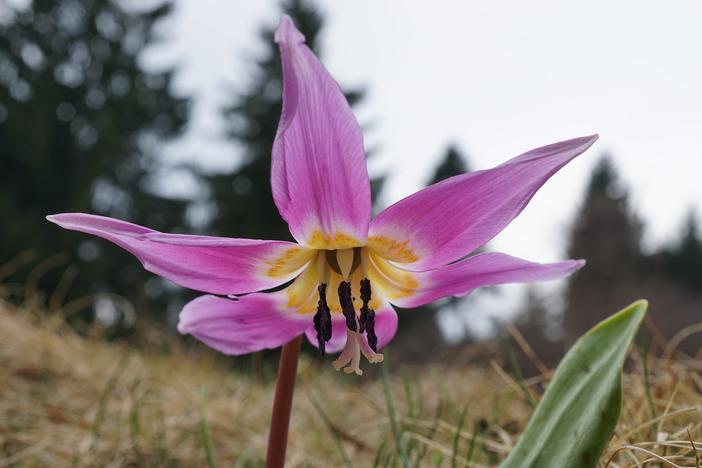Dog’s-Tooth Violet
(Erythronium dens-canis)
Dog’s-Tooth Violet (Erythronium dens-canis)
/
/

xulescu_g
CC BY-SA 2.0




































































Estimated Native Range
Summary
Dog’s-Tooth Violet is valued for its early spring flowers and naturalizing ability, making it a charming addition to woodland gardens, shade gardens, and naturalized areas. It prefers dappled sunlight to full shade and thrives in humus-rich, well-drained soils. While it requires medium amounts of water, it is important to avoid waterlogged conditions. This plant is relatively low-maintenance but can be susceptible to slug and snail damage. It is not typically invasive but can spread over time in favorable conditions, forming attractive colonies.CC BY-SA 4.0
Plant Description
- Plant Type: Bulb
- Height: 0.5-0.8 feet
- Width: 0.3-0.3 feet
- Growth Rate: Moderate
- Flower Color: Pink, Purple, White
- Flowering Season: Spring
- Leaf Retention: Deciduous
Growth Requirements
- Sun: Part Shade
- Water: Medium
- Drainage: Slow, Medium
Common Uses
Bee Garden, Bird Garden, Butterfly Garden, Deer Resistant, Edible*Disclaimer: Easyscape's listed plant edibility is for informational use. Always verify the safety and proper identification of any plant before consumption., Hummingbird Garden, Low Maintenance, Rock Garden, Showy Flowers
Natural Habitat
Forest floors and damp meadows of Europe, particularly in the Alps and the Pyrenees
Other Names
Common Names: Dog’s-Tooth-Violet, Dogtooth Violet
Scientific Names: , Erythronium dens-canis, Erythronium dens-canis var. niveum, Erythronium bifidum, Erythronium bulbosum, Erythronium caninum, Erythronium dens-canis subsp. albiflorum, Erythronium dens-canis var. purpureum, Erythronium dens-canis var. roseum, Erythronium dens-canis var. tetragonum
GBIF Accepted Name: Erythronium dens-canis L.